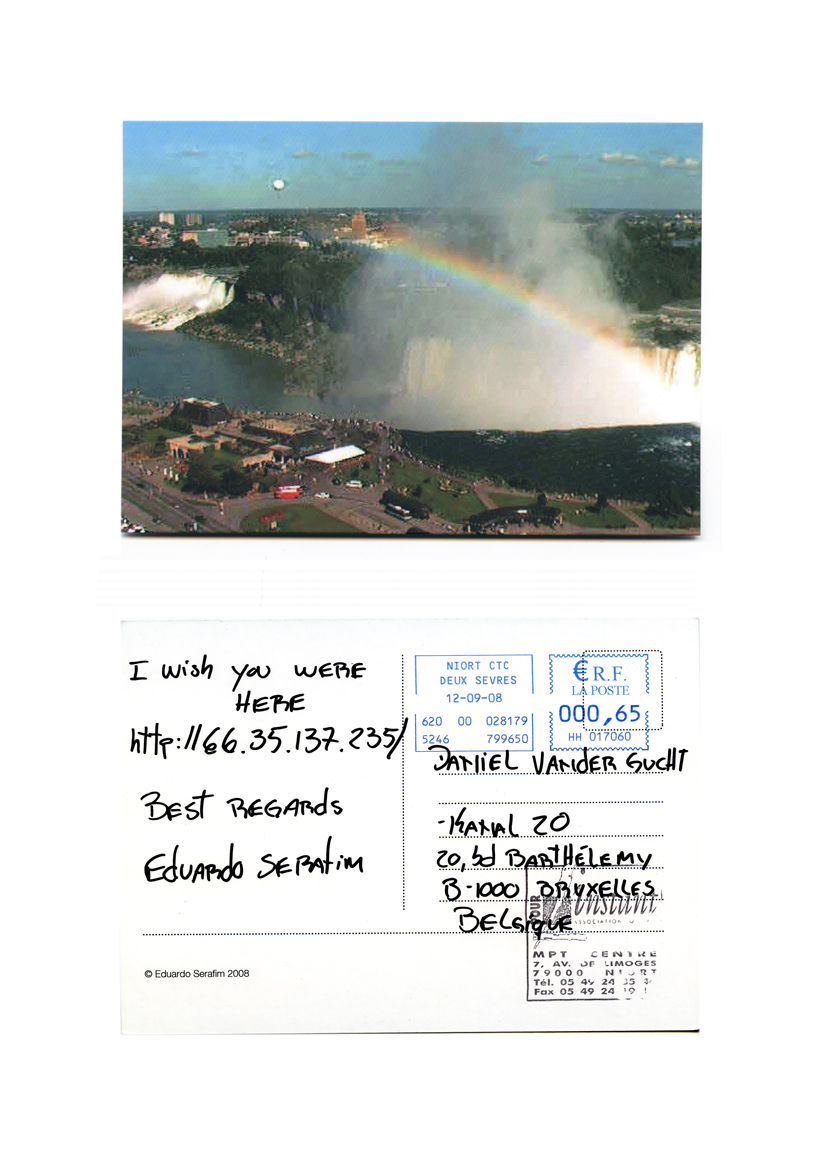I wish you were here
explores the notion of surveillance. Through this series, Eduardo Serafim works with the border between security and voyeurism, public and private space. This project exceeds the intrusiveness that is normally found in these kinds of images. The images are taken from public spaces such as offices, hospitals, construction sites, and also within the privacy of people's homes. As though he is in a control tower, Serafim accesses other's lives creating postcards and mails them off to unsuspecting recipients, as a souvenir of a visit that never happened. He creates a tension between the most simple photographic representations and the weight that these images induce. The interest of this project is to go deeper into a current problem: how much are our lives are accessible by these new technologies? How disconnected are we from our privacy?
The idea of public surveillance exists in the finality of the necessary prevention of chaos. In the era of security, we have no choice but to familiarize ourselves with the ubiquity of identification systems and surveillance in our daily lives.
New technologies are being created to facilitate access and manipulation of these means of security, reinforcing the question of image rights. Eduardo Serafim used one of these new approaches proposed by the market. Companies are developing very simple and accessible systems designated for private surveillance. The phrase "We invite you to discover a new world of surveillance" is the tag line on most website that sell these new systems. "I wish you were here" was inspired by this publicity. Cameras directly connected to the Web allow access to surveillance images from any computer with a network connection. One simple website can be used to find more than 100,000 connected cameras. This work is intended to evaluate of the necessity to record private lives.
The facility of access to this "confidential" material is an important part of the series. It is easily possible to find cameras monitoring employees in a factory or pedestrians on a public square. These surveillance cameras are installed by citizens, bar owners, companies and others, in public and private places. The idea that we can control employees and neighbors from everywhere - like a panopticon - is in itself an invasion of privacy. Eduardo Serafim used the strangeness of the idea that anyone has the opportunity to connect to these cameras, control their diaphragm use de powerful zooms the possibility to change the positions of the camera and chose the frame. With these cameras we can enter into the apartments, hospitals, companies or watch, with incredible accuracy, the faces of people circulating roaming in the streets of Moscow, Spain, New York and many other cities.
During an artist-residency, Eduardo Serafim project full-circle. He used these cameras as though they were his own. Serafim methodically examined thousands of videos and selected one hundred images which he made into postcards. He expanded the dialogue by sending the postcards to people he didn't know. The recipients of the postcards were artists, journalists, institutions of art and individuals who were chosen randomly. All cards were sent with the sentence "I wish you were here" and the IP address used to access the camera where the image was produced.



































































































